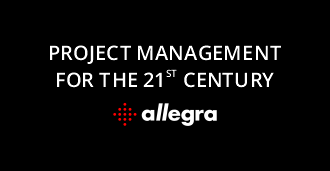Specification Sheets: 10 Steps for a Good Project Base Plan
Overview
When writing project specification sheets, how we formulate requirements has a significant influence on the project’s success. Ideally, a specification sheet is already available when the project plan is drawn up, so that you’re all ready to go.
In the following article, you can read about a few rules that help in writing specification sheets. These rules can serve as a checklist for a specification sheet assessment.
Rules, Tips, and Tricks
We’ve compiled the most important general rules that you should consider when writing specifications. Let’s take a look at the major topics:
- Making a Specifications Sheet Visual
- 10 Rules for Organizing Content in Your Specifications Sheet
- Writing Specifications with Style
- Sentence Patterns
- List of “Weak Words”
- List of Requirement Attributes
This article is partly based on information from the VDA volume Komponentenlastenheft – Automotive Standardstruktur.
Making a Specifications Sheet Visual
I recommend using the Twin Peaks model for creating requirements specifications and functional specifications. It’s important that your solution concept describes the desired project result in a way that is clear for all involved parties (e.g. with text, tables, diagrams, pseudo-code).
10 Rules for Organizing Content in Your Specifications Sheet
Here’s the ten rules you must follow when writing specifications sheets:
| 1 | Clearly identify requirements and separate them from contextual information. |
| 2 | Give each requirement a unique identifier. |
| 3 | Formulate binding requirements with “must” . |
| 4 | Use the same name for the same thing throughout the specification, even if the name is repeated frequently. |
| 5 | Define an acceptance criterion or verification method for each requirement from the beginning. |
| 6 | Give preference to tables and graphical representations to text descriptions. |
| 7 | Formulate exactly one requirement in one (sub)sentence, never several. |
| 8 | Document or reference the source of a requirement as detailed as you can. |
| 9 | Define potentially ambiguous terms in a glossary. |
| 10 | Do not use a forward slash ( / ) without clearly indicating whether it means “and”, “or”, or both “and/or”. |
Writing Specifications with Style
| 1 | Use effective sentence patterns, as shown in the examples below. |
| 2 | Formulate requirements in complete sentences, not in key words. |
| 3 | Use active sentences and avoid passive sentences. |
| 4 | Form short sentences and avoid nested sentences. |
| 5 | Avoid “weak words” (e.g. but, too, absolutely, other, extremely, also, accordingly). See a more detailed list below. |
| 6 | Avoid qualitative adjectives such as “slow,” “fast,” “beautiful,” “hot,” “cold,” “cyclical,” etc. |
Sentence Patterns
Use effective sentence patterns when creating specifications sheets. A good, clear example of an effective sentence is the following:
If the pressure exceeds 1 bar, then the control must open the relief valve.
Each sentence needs a condition, a subject, a requirement word, an action, and an object. Let’s break that sentence down:
- Condition: “If the pressure exceeds 1 bar,”
- Subject: “the control”
- Requirement word: “must”
- Action: “open”
- Object: “the relief valve”
In an agile environment, we use a different sentence pattern in the form of as (a role), action, and destination. A good sentence within an agile environment is:
As an administrative user, I want to important a column of an Excel spreadsheet to use it in populating a selection list.
- As (a role): As an administrative user.
- Action: I want to import a column of an Excel spreadsheet
- Destination: to use it in populating a selection list
List of “Weak Words”
The use of words from the following list leads to fuzzy ideas regarding requirements. Even though it’s fun to use these words, they make things harder to understand.
When you create your specifications sheets, you have to make sure these words and expressions do not appear in the final draft. This list was composed by Marion Dreher.
| A | a bit, about, absolutely, abundant, accomplished, actually, advanced, a few, against, a little, almost, already, amazingly, and, and when, any, anyone, anything, apparently, approximately, as if, as of, as the case may be, at, at all, at best, at most, as possible, at first, at the same time, at times, a while |
| B | bad, barely, beautiful, best, best possible, better, but |
| C | carefully, certain accustomed, certainly, circa/ca., classic, clearly, close, closely, colossal, common, conceivable, conditional, contemporary, correspondingly, currently, customarily, customary, cyclical |
| D | depending on, determined, differently, difficult |
| E | elementally, enormously, enough, entire, equal, especially, essentially, estimated, even, exact, exceedingly, exceptionally, extensively, extraordinarily, extremely |
| F | fabulous, fairly, fanciful, far, fast, for, formerly, for the most part, for the time being, frequently, further |
| G | good, great |
| H | halfway, hard, hopefully, however, huge, hurriedly |
| I | imperceptibly, in case, incidental, inconsiderably, in no case, innumerable, insanely, intuitive, isolated |
| J | just |
| K | |
| L | less, light, like, little, long, loud |
| M | mainly, many, many times, meanwhile, moderately, modern, more, more often than not, more or less, most, most likely, mostly, much, multiple |
| N | never, next to, novel, now and then, numerous |
| O | obviously, often, operable, optimal, once, once upon a time, one, one day, other, otherwise |
| P | partially, partly, perfect, perfectly, perhaps, perplexing, persistently, plausible, possible, possibly, presumably, principled, probably, promptly |
| Q | quiet, quite |
| R | rare, rather, really, recent, recently, regularly, remaining |
| S | scarce, seemingly, self-explanatory, several, several times, short, should, simply, slow, small, so, some, somehow, something, sometimes, somewhere, somewhere from, somewhere to, soon, so to say, specifically, strongly, sweeping |
| T | terrible, then, thorough, tiny, too (+ adjective), to some extent, total, tremendous |
| U | uncommonly, under certain circumstances, understandable, unusually, usually |
| V | various, vernacular, very |
| W | whole, wide |
| X | |
| Y | yet |
| Z |
List of Requirement Attributes
Here’s a table of requirement attributes that will help you keep everything structured in your specifications sheets.
| Attribute | Required? | Value/Description/Status |
| ID | Yes | Number or Text |
| Field Type | Yes | Title |
| Requirement | ||
| Context | ||
| Version | Yes | Text |
| Status | Yes | Draft |
| Ready for Review | ||
| To be Revised | ||
| Completed | ||
| Supplier’s Statement | Accepted/Not Accepted | |
| Supplier’s Comment(s) | Text |
Further Information
You can also check out an overview of project management methods.




